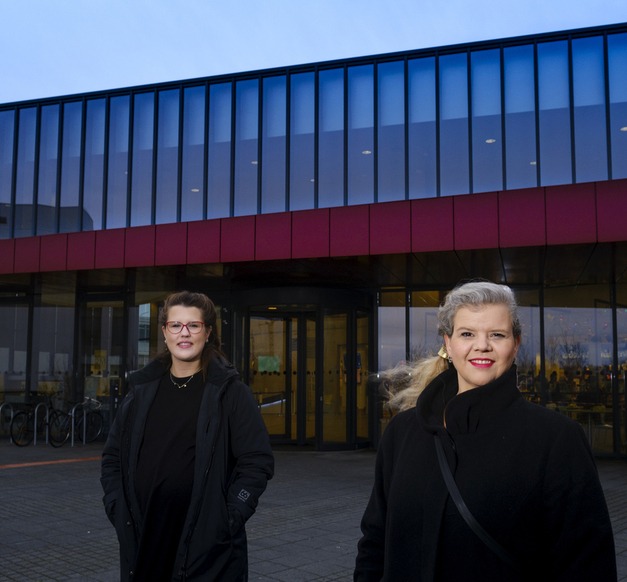
The thesis of Guðrún Svana Hilmarsdóttir, PhD student in food science, is entitled "Fish protein for human consumption – a redesign of fishmeal and fish oil processing" and looks at ways to increase the value of fishmeal, using it to produce protein for human consumption. Her primary supervisor is María Guðjónsdóttir, professor and deputy head of the Faculty of Food Science and Nutrition, with secondary supervisors Sigurjón Arason, professor of food science, and Ólafur Ögmundarson, adjunct lecturer at the Faculty.
A step in the right direction
For the last 70 years or so, the same methods have been used to process pelagic fish into fishmeal and fish oil in Iceland. They have remained the same despite the fact that the raw materials are now in better condition when they reach land, for example thanks to better refrigeration on board the ships.
Many fishmeal and fish oil factories in Iceland work with by-products from fresh fish processing, including the entrails, fish that are too small to be filleted, and other incidental raw materials. These ingredients are used to produce fishmeal and fish oil, which is mostly used in fish farming, i.e. as fish food.
Guðrún says that the aim of her thesis is to improve the quality of the product and use it for human nutrition instead. She explains that this is a big step and she knows that one thesis will not transform methods that have endured for 70 years. However, this is a step in the right direction and the research will reveal what needs to change, where to begin and so forth.
For the last three years, Guðrún has been working on detailed analyses of the raw materials on their journey through the fishmeal and fish oil processing. María says that by optimising various steps in the process, it is possible to produce higher quality ingredients, which is a worthwhile change. These analyses, as well as the scientific articles that have been written about them, are extremely helpful for improving fishmeal and fish oil processing methods and creating new methods to process fish protein for human consumption.
Unique collaboration with the Síldarvinnslan processing plant in Neskaupstaður
The research looks at mackerel, herring, blue whiting and capelin, which are the species processed by the Faculty of Food Science and Nutrition's close partner for 7-8 years, the Síldarvinnslan processing plant in Neskaupstaður.
María and Guðrún say they are extremely grateful for this collaboration and that the facilities at Síldarvinnslan are unique; students are allowed into the processing plant and given support, advice and raw materials to help them conduct their research.
The inspiration for the research project be be traced in large part back to this collaboration with Síldarvinnslan. The research is based on the processing of pelagic fish at the company, which is also linked to a range of other doctoral theses that have been written at the Faculty of Food Science and Nutrition. María says that the Faculty is keen to continue this partnership, create new methods and try to ensure that processing is optimised, both in terms of quality and environmental impact.
The research looks at mackerel, herring, blue whiting and capelin, which are the species processed by the Faculty of Food Science and Nutrition's close partner for 7-8 years, the Síldarvinnslan processing plant in Neskaupstaður.

Practical research that won't disappear into a drawer
Matís, another close partner of the Faculty in postgraduate studies, is also involved with the project. This creates a bridge between the University and industry, which Guðrún argues is important for projects like this and also influenced her choice of thesis subject.
Guðrún says that the practical potential of the research was another big contributing factor behind her choice. This research will not be put up on a shelf or disappear into a drawer; it will be used. "You're doing something that someone else can use," says Guðrún and María agrees that this is important. Guðrún adds that by making the results publicly available in scientific articles, more companies will be able to use them.
She reports that the research has already yielded some findings and María adds that detailed analyses of the current processing methods are available, which opens up the possibility of change. The next step is to change certain steps in the process and see what impact those changes have on quality. The teams expects that they will be able to change processing methods in order to produce protein products for human consumption.
"Nobody has done this before"
Guðrún says that the value of this project for science in general is based on the fact that "nobody has done this before," i.e. conducted in-depth research into the impact of each stage of processing in traditional fishmeal and fish oil factories. This will provide a good foundation for a lot of other research into similar topics.
The research is no less valuable for society, since it focuses on making better use of seafood products and the fishing quotas allocated each year. María adds that with this research, the Faculty of Food Science and Nutrition also aims to lead the way in seafood research in Iceland, meaning that the project could also create new employment opportunities in the fishing industry.
The project has been awarded grants from the Technology Development Fund and the AVS Research Fund.
Author of the article: Katrín Ósk Ingimarsdóttir, student in web communication


